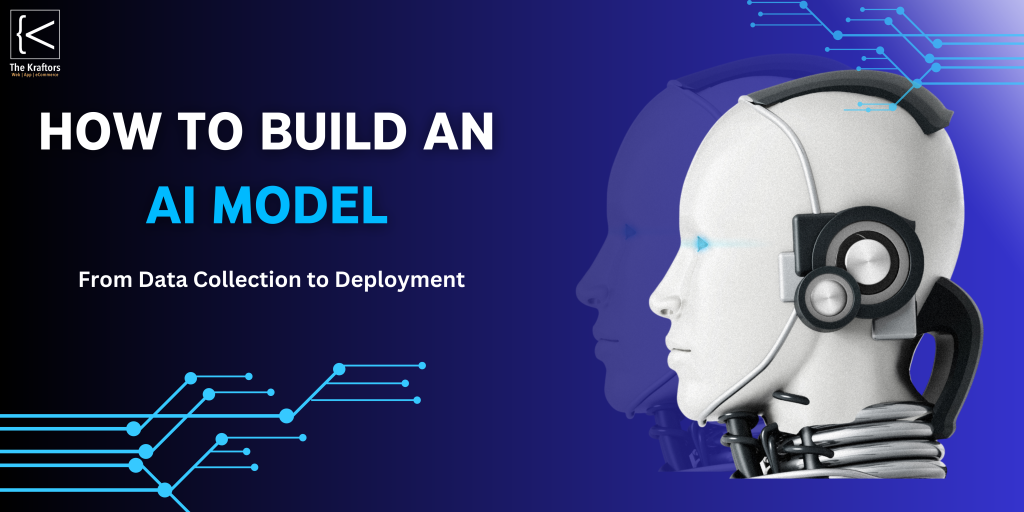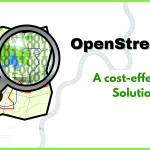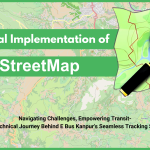Introduction
Developing the first AI model is thrilling and engaging for most people. It has been quite some time since AI capability has become a vital requirement in a wide range of fields, and possessing the tools to develop and implement your own AI model is extremely valuable. This guide will take you through all the steps from data collection to deployment so that you can learn through practice and build experience in artificial intelligence (AI) and machine learning (ML). From new PSD users to users trying to progress their skills, here is a list of strategies that will successfully guide this action.
Step 1: Define Your AI Problem
However, when beginning to work on an AI solution, one should first state the problem that he wants to tackle. This first step is critical as it defines the range of data you collect and also the modelling methodology. If you are trying to predict house prices, classify an image, or classify the sentiment of customers then you are doing this. Read as much as you can about the problem domain before starting to work on it. In doing so, your model will not only become more pertinent for your specific outputs but also your entire effort will be directed towards achieving what is intended.
“The most important part of building AI is figuring out what to do with your data. Get that right, and everything else will fall into place.”
— Andrew Ng
Step 2 : AI Data Collection
The second step, after having defined your problem, is to collect related data. There are several sources for data collection:
Public Datasets: Websites like Kaggle, UCI Machine Learning Repository, and Google Dataset Search offer a wealth of datasets for various applications. These resources are ideal for beginners as they come pre-cleaned and are often well-documented.
Web Scraping: For any specific data requirement, one must consider web scraping with tools such as Beautiful Soup or Scrapy. This technique helps you to scrape data from the website, but before that, please check the robots.txt file and terms of service.
APIs: Some platforms offer APIs to collect real-time information, for example, for analysing social networks (Twitter) or for obtaining weather information (OpenWeather).
Step 3: AI Data Preprocessing
Once you’ve collected your data, it’s time to preprocess it. This step involves cleaning and transforming your data to make it suitable for modelling. Key tasks include:
Handling Missing Values: Depending on your data, you can fill in missing values (e.g., with the mean or median) or remove data points entirely.
Normalising Data: Scale your features to ensure they have a similar range, which can improve model performance.
Encoding categorical variables: Use techniques like one-hot encoding to convert categorical variables into numerical representations. This transformation is essential, as most ML algorithms require numerical input.
Step 4: Choosing the right AI Model
Every project that involves the use of AI should choose the right model to achieve the project’s objective. Depending on your problem, you can choose from various algorithms:
Supervised Learning: Better only for labelled data, for example, regression: predicting continuous characteristics, or classification: predicting types.
Unsupervised Learning: Often employed for data that doesn’t have any labels, perhaps elevating (grouping similar points) or making lower (small dimensionality of the feature space).
Deep Learning: Suitable for activities that are delicate, like image identification or natural language comprehension, and with tools like TensorFlow or PyTorch.
Step 5: Model Training
So you want to fit your model to this data, so let’s go ahead and add the following lines of code. This involves:
Splitting the Data: Randomly split your data set into training and testing data. the most employed separation ratio is 70:30. The model was built and parameterised using the training set and then evaluated using the testing set.
Training the Model: For the chosen algorithm, train the model with use of the training data and fine-tune parameters as deemed necessary.
Tuning Hyperparameters: Depending on the task, try to find the best parameters for our model more often than not through methods such as grid search or random search.
Step 6: AI Model Evaluation
Once the model is trained, assess its performance with the testing dataset Common evaluation metrics include:
Accuracy: The percentage of correctly predicted instances.
Precision and Recall: Beneficial, especially when you have a lot of data for one class and very few for the others.
F1 Score: A single average of precision and recall, when the class distribution is uneven, the harmonic mean will reflect balanced results.
Step 7: Deployment
After achieving satisfactory performance with your model, the next step is to deploy it Deployment can be accomplished in several ways:
Web Applications: Use frameworks like Flask or Django to create a web app that utilises your model.
APIs: Deploy your model as a RESTful API using AWS Lambda or Google Cloud Functions.
Extend your model to mobile apps with the help of different frameworks like TensorFlow Lite.
Step 8: Monitoring and Maintenance
After deployment, there is a need for continued monitoring and updating of the model, or else it is rendered ineffective.
Collect user feedback, update the model with new data, and refine it as necessary. Remember that models can drift over time as data changes, so regularly evaluating and retraining your model is crucial.
Conclusion
It may sound challenging to build your initial AI model, but by setting guidelines along these steps, you will be on the right track towards creating the model and understanding AI and machine learning. Remember, practice is key—so keep experimenting with different datasets and models to enhance your skills!
Ready to take your AI projects to the next level?
At Kraftors Web Solutions, we offer custom AI and machine learning solutions tailored to your business needs. Whether you’re just starting out or looking to scale your existing AI projects, our expert team is here to help.
Contact us today to learn more about how we can help you implement AI in your business.
Also, don’t forget to check out our previous blog on AI. Deploying AI Application: for insights on taking your AI model from development to real-world implementation.”


